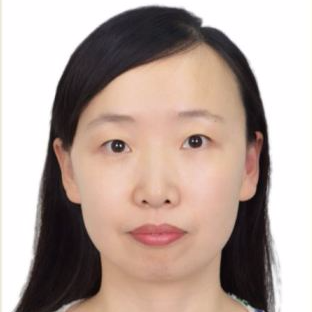Medicinal Chemistry in China
A special issue of Molecules (ISSN 1420-3049). This special issue belongs to the section "Medicinal Chemistry".
Deadline for manuscript submissions: closed (31 October 2021) | Viewed by 31859
Special Issue Editors
Interests: medicinal chemistry; drug design; discovery and development of metabolic novel drug; lead compound discovery and optimization; high efficient synthetic methodology; non-natural amino acid
Special Issues, Collections and Topics in MDPI journals
Interests: nucleosides and nucleotides; drug design and synthesis; molecular modeling
Special Issues, Collections and Topics in MDPI journals
Interests: antiviral drug; medicinal chemistry; drug design; new drug modalities
Special Issues, Collections and Topics in MDPI journals
Interests: design and synthesis of bioactive compound; synthesis and modification of natural product; drugability optimization
Special Issues, Collections and Topics in MDPI journals
Interests: telomere; DNA; senescence; cancer biology; genome stability; molecular cell biology; RNA
Special Issues, Collections and Topics in MDPI journals
Special Issue Information
Dear Colleagues,
This Special Issue is entitled “Medicinal Chemistry in China”. In China, many research groups, both from industry and academia, are working on medicinal chemistry topics that cover almost all therapeutic fields, ranging from metabolic disease, CNS disease, anticancer agents, and antiviral agents. Molecules devoted to the treatment of rare disease are also being investigated. The results obtained, frequently very important and recognized all over the world, are derived from the close collaboration of experts in different areas, such as computational chemistry, organic chemistry, biology, biochemistry, and pharmacology.
Scientists from China are cordially invited to contribute original research papers or reviews to this Special Issue of Molecules, which reports on the design, synthesis, and biological evaluation of potentially active compounds in the different subjects of medicinal chemistry.
Prof. Dr. Jiang Wang
Prof. Dr. Liang-Ren Zhang
Prof. Dr. Peng Zhan
Prof. Dr. Qi-Dong You
Prof. Dr. Tian-Miao Ou
Prof. Dr. Xiao-Yun Lu
Guest Editors
Manuscript Submission Information
Manuscripts should be submitted online at www.mdpi.com by registering and logging in to this website. Once you are registered, click here to go to the submission form. Manuscripts can be submitted until the deadline. All submissions that pass pre-check are peer-reviewed. Accepted papers will be published continuously in the journal (as soon as accepted) and will be listed together on the special issue website. Research articles, review articles as well as short communications are invited. For planned papers, a title and short abstract (about 100 words) can be sent to the Editorial Office for announcement on this website.
Submitted manuscripts should not have been published previously, nor be under consideration for publication elsewhere (except conference proceedings papers). All manuscripts are thoroughly refereed through a single-blind peer-review process. A guide for authors and other relevant information for submission of manuscripts is available on the Instructions for Authors page. Molecules is an international peer-reviewed open access semimonthly journal published by MDPI.
Please visit the Instructions for Authors page before submitting a manuscript. The Article Processing Charge (APC) for publication in this open access journal is 2700 CHF (Swiss Francs). Submitted papers should be well formatted and use good English. Authors may use MDPI's English editing service prior to publication or during author revisions.
Keywords
- drug design
- drug discovery
- lead compounds
- anticancer agents
- antiviral agents
- antidiabetic agents
- CNS agents
Related Special Issue
- Medicinal Chemistry in Europe in Molecules (15 articles)











